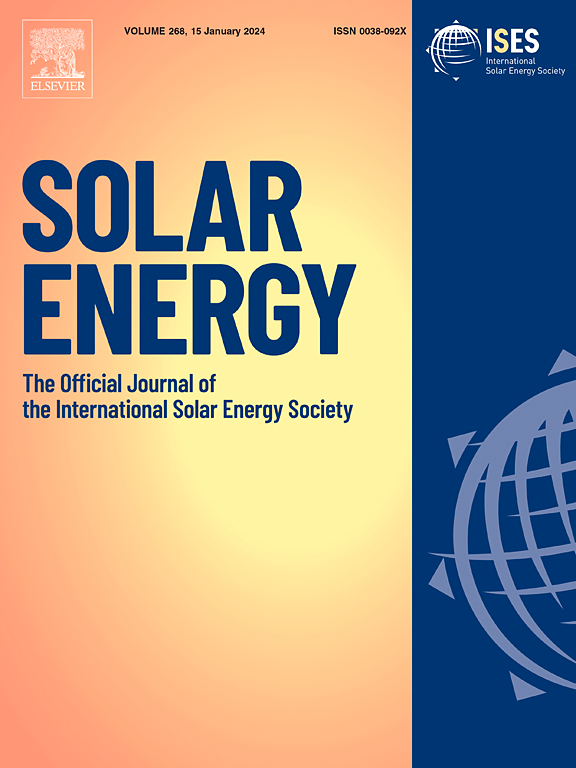一种基于共交联水凝胶的新型智能窗,具有温度自适应和防冻功能,可用于建筑节能
IF 6
2区 工程技术
Q2 ENERGY & FUELS
引用次数: 0
摘要
基于水凝胶的热变色智能窗具有自适应调节太阳辐射的功能,因其在温度管理方面的潜力而受到越来越多的关注。然而,含水量极高的水凝胶可能会结冰,导致透明度降低,甚至在寒冷环境中出现窗户破裂的风险。本研究通过引入抗冻剂甘油(GLY)和聚合物聚乙烯醇(PVA),制备了具有优异太阳辐射调节和抗冻性能的共交联 P(NIPAM-co-AM)@GLY@PVA 水凝胶。通过调整 GLY、PVA 和亲水性 AM 的用量,P(NIPAM-co-AM)@GLY@PVA 水凝胶显示出令人满意的热致变色性能,其透光率(Tlum)为 68.05%,太阳辐射调节能力(ΔTsol)为 62.11%,低临界溶液温度(LCST)为 24 °C,防冻温度为 -15 °C。热管理实验证明,基于 P(NIPAM-co-AM)@GLY@PVA 水凝胶组装的热致变色@抗冻(TCA)智能窗在管理室内温度和循环稳定性方面具有优异的性能。这项研究为解决水凝胶智能窗的应用问题开辟了一条新途径。本文章由计算机程序翻译,如有差异,请以英文原文为准。
A novel smart window based on co-crosslinked hydrogel with temperature self-adaptability and anti-freezing functions for building energy saving
Thermochromic smart windows based on hydrogels with adaptive regulation of solar radiation have attracted an increasing attention due to their potential in temperature management. However, hydrogels with extremely high water content may freeze, leading to the risk of transparency reduction and even window breakage in cold environment. In this study, co-crosslinked P(NIPAM-co-AM)@GLY@PVA hydrogel with excellent solar radiation regulation and anti-freezing performance was prepared by introducing antifreeze glycerol (GLY) and polymer polyvinyl alcohol (PVA). By adjusting the amount of GLY, PVA and hydrophilic AM, P(NIPAM-co-AM)@GLY@PVA hydrogel showed a satisfactory thermochromic performance, with a luminous transmittance (Tlum) of 68.05 %, a solar modulation ability (ΔTsol) of 62.11 %, a lower critical solution temperature (LCST) of ∼24 °C and an antifreeze temperature of −15 °C. The thermal management experiments proved that the thermochromic@anti-freezing (TCA) smart window assembled based on P(NIPAM-co-AM)@GLY@PVA hydrogel had an excellent performance in managing indoor temperature and cyclic stability. This work may open a new avenue to solve problems in the application field of hydrogel-based smart windows.
求助全文
通过发布文献求助,成功后即可免费获取论文全文。
去求助
来源期刊

Solar Energy
工程技术-能源与燃料
CiteScore
13.90
自引率
9.00%
发文量
0
审稿时长
47 days
期刊介绍:
Solar Energy welcomes manuscripts presenting information not previously published in journals on any aspect of solar energy research, development, application, measurement or policy. The term "solar energy" in this context includes the indirect uses such as wind energy and biomass
 求助内容:
求助内容: 应助结果提醒方式:
应助结果提醒方式:


